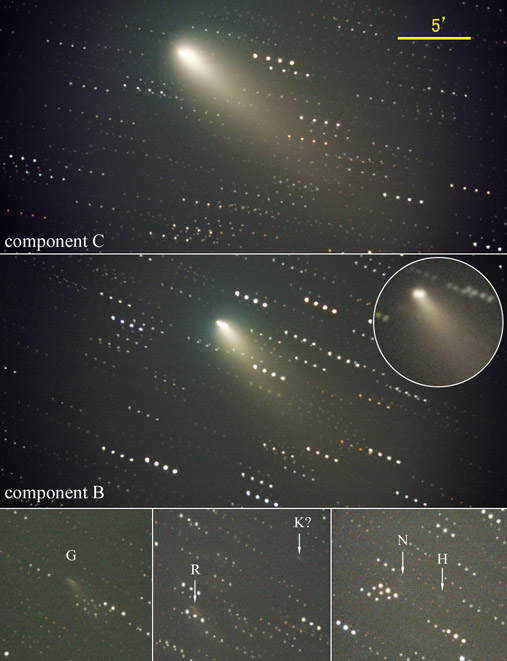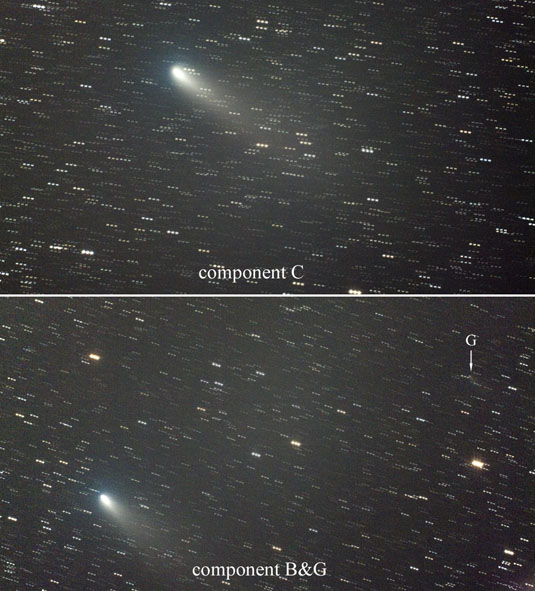
 |
| Date & Time: | (Component C)May 2 2006, from 22:58 to 23:25 JST(+0900), 8min.×4shots |
| (Component B)May 2 2006, from 26:28 to 26:55 JST(+0900), 8min.×4shots | |
| (Mag. image of B)May 2 2006, from 23:43 to 23:50 JST(+0900), 2min.×4shots | |
| (Component G)May 2 2006, from 24:03 to 24:21 JST(+0900), 8min.×3shots | |
| (Component R)May 2 2006, from 24:33 to 24:51 JST(+0900), 8min.×3shots | |
| (Component N)May 2 2006, from 25:04 to 25:23 JST(+0900), 8min.×3shots | |
| Optical: | Meade 25cm(10") Schmidt-Cassegrain with conversion lens (f=1600mm, F6.3) |
| Auto-guided with Meade LX200 Equatorial & Pictor 201XT | |
| Digital Camera: | Nikon D70 (Remodeled) |
| Location: | Ooizumi, Hokuto city, Yamanashi pref. |
| Camera Settings: | Recording Format...12bit CCD-RAW, converted to 16bit TIFF(3008×2000) |
| CCD Sensitivity...ISO1250 |
 |
| Date & Time: | (Component C)May 2 2006, from 22:20 to 22:41 JST(+0900), 150sec.×6shots |
| (Component B)May 2 2006, from 22:53 to 23:13 JST(+0900), 150sec.×6shots | |
| Optical: | TAKAHASHI 16cm(6.3") epsilon (f=530mm, F3.3) |
| Auto-guided with TAKAHASHI EM-200 Equatorial | |
| Digital Camera: | Fujifilm FinePix S2Pro |
| Location: | Ooizumi, Hokuto city, Yamanashi pref. |
| Camera Settings: | Recording Format...12bit CCD-RAW, converted to 16bit TIFF(3024×2016) |
| CCD Sensitivity...ISO1600, White Balance...Auto |
 Schwassmann Wachmann 3 on May 3 & 4, 2006 |
 Schwassmann Wachmann 3 on Apr 27, 2006 |
 |
 |
Copyright(c) 2006 by Naoyuki Kurita, All rights reserved. |
| To top page | To Comets&Meteors index |